Inside The Big Business of Royal Fashion Blogging

- Oops!Something went wrong.Please try again later.
It’s been called the kind of marketing that money cannot buy. When the royal women formerly known as Kate Middleton and Meghan Markle are photographed in public wearing items by specific fashion brand, they not only drive internet searches and move product, they also confer a kind of unspoken endorsement that can elevate the reputation of a company.
“I think people have more trust in us as a brand because members of the royal family are wearing [our pieces],” Sarah Corbett-Winder, in-house stylist for the British brand Boden says, noting that the Duchess of Cambridge has been spotted in the company’s styles several times.
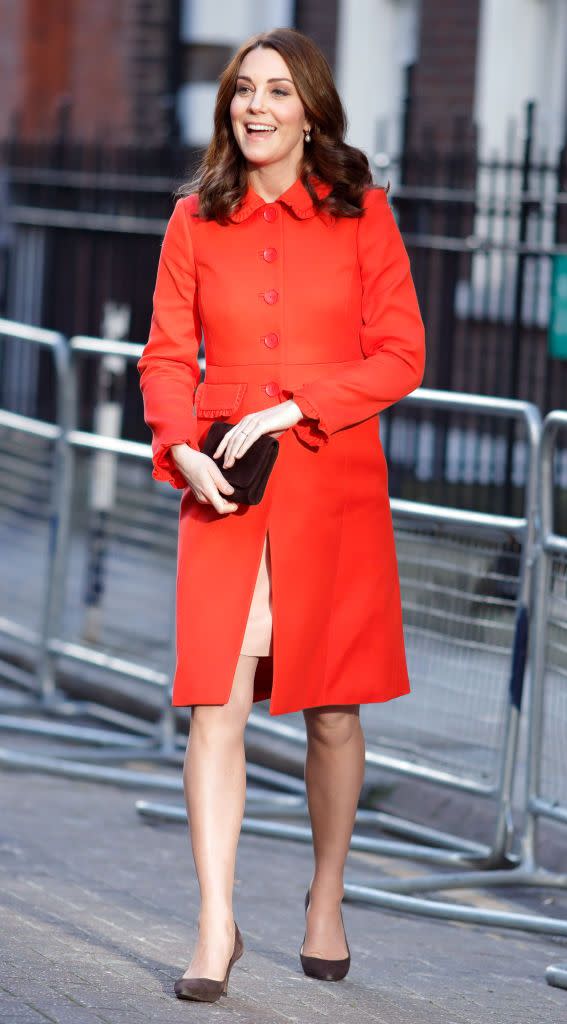
But the royals’ impact on fashion extends beyond the labels they wear and the trends they inspire. They have also spawned something of an internet-based cottage industry of bloggers entirely dedicated to chronicling the royal women's wardrobes.
One of the biggest players in the space is Effervescence Media Group, the company behind Kate’s Royal Closet and Meghan’s Mirror, which boasts two full-time employees and a dozen of freelancers working to swiftly identify the clothes Meghan and Kate wear and then share that information across various social media platforms.
For Christine Ross, the group’s creative director, the detective work starts the minute photos of the royals hit the internet.
“Sometimes it's easy,” she says. “They come out in something we've seen before and it just makes our jobs really, really simple.” Or, the team, which includes Ross's business partner Amanda Dishaw, will receive intel from a brand, a royal reporter, or a press release from the Palace. But other times, they’re zooming in on images, looking for distinctive details.
“If something literally has a logo on it that, obviously, makes it a lot easier,” Ross says. But she also describes the research process as “nonlinear.” “Sometimes it's recognizing a detail on a dress that comes from a specific designer, and sometimes it's literally hours of scrolling designer websites looking for something similar.”
Other eagle-eyed social media users will chime in to help to solve the sartorial mystery, but every so often there’s a piece that remains elusive, even after hours of searching. “Meghan and Kate are both guilty of wearing things that are really classic designs, and unless you really see the tag on the inside, you don't know,” she says, recalling a sweater coat worn by the Duchess of Sussexes that still “haunts” her team.
People, especially Americans, are hungry for this shopping intel. Ross estimates that 75% of their readers live in the U.S. "Americans really love the royal family," she says—and they want to dress like them too.
"There's something inspiring about knowing that these women are going to go down in the history books," Ross says. "And I think we admire that and want to capture that magic, that fairytale sparkle that they embody." The average person likely won't ever attend a state dinner, with a tiara atop their head, but as the royals have become more approachable, their fashion has become more affordable. Realistically, a royal fan might be able to afford a pair of Rothy's flats, which Meghan has been known to sport, or the first face mask that Kate wore to a public engagement.
"People wanted Kate's mask because you can wear that to the grocery store," Ross says. "It's something that you can wear in your everyday life that adds a little of that magic."
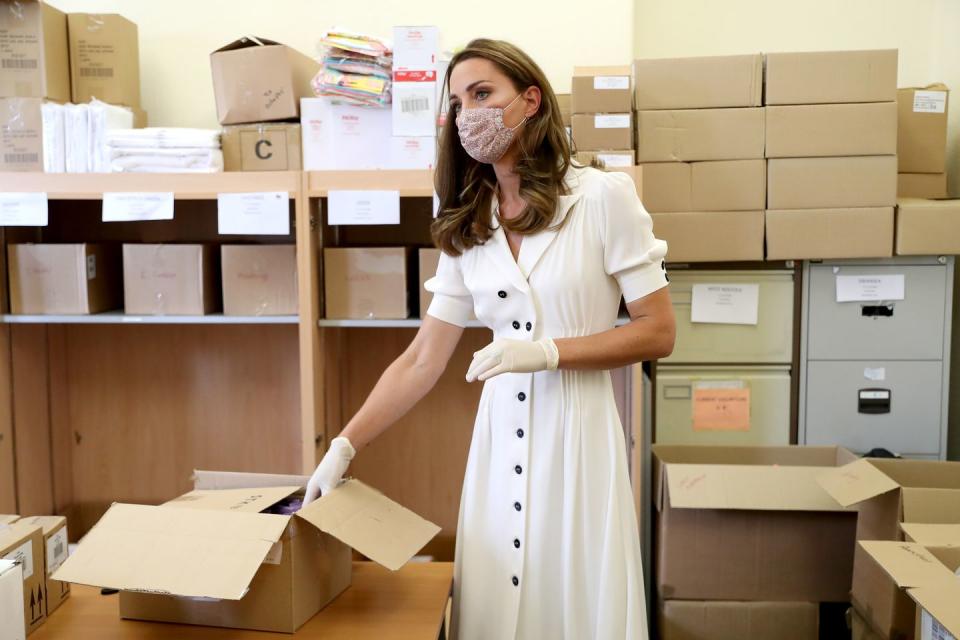
But royal fashion bloggers aren’t just in it for the thrill of the hunt. There’s money to be made in posting about these clothes, and often, the bloggers get a commission from each sale they drive by way of an affiliate link.
For those unfamiliar with the concept, “think of it as the salesperson in store,” explains Amber Venz Box, the co-founder and CEO of Rewardstyle, an invite-only influencer marketing platform, designed to help bloggers monetize their content. “When you walk into a department store, whoever helps you gets a commission on that sale as a salesperson. [Affiliate links are] the modern day version of that.”
When a blogger helps to guide a purchase, they’re compensated by the digital store in the same way a salesperson would be, at no additional cost to the consumer. Over the past decade, they've become a common way to monetize digital content. Even Meghan Markle used RewardStyle on her now-defunct lifestyle blog The Tig, before her relationship with Prince Harry went public. (Notably, Town & Country also uses affiliate links on our site.)
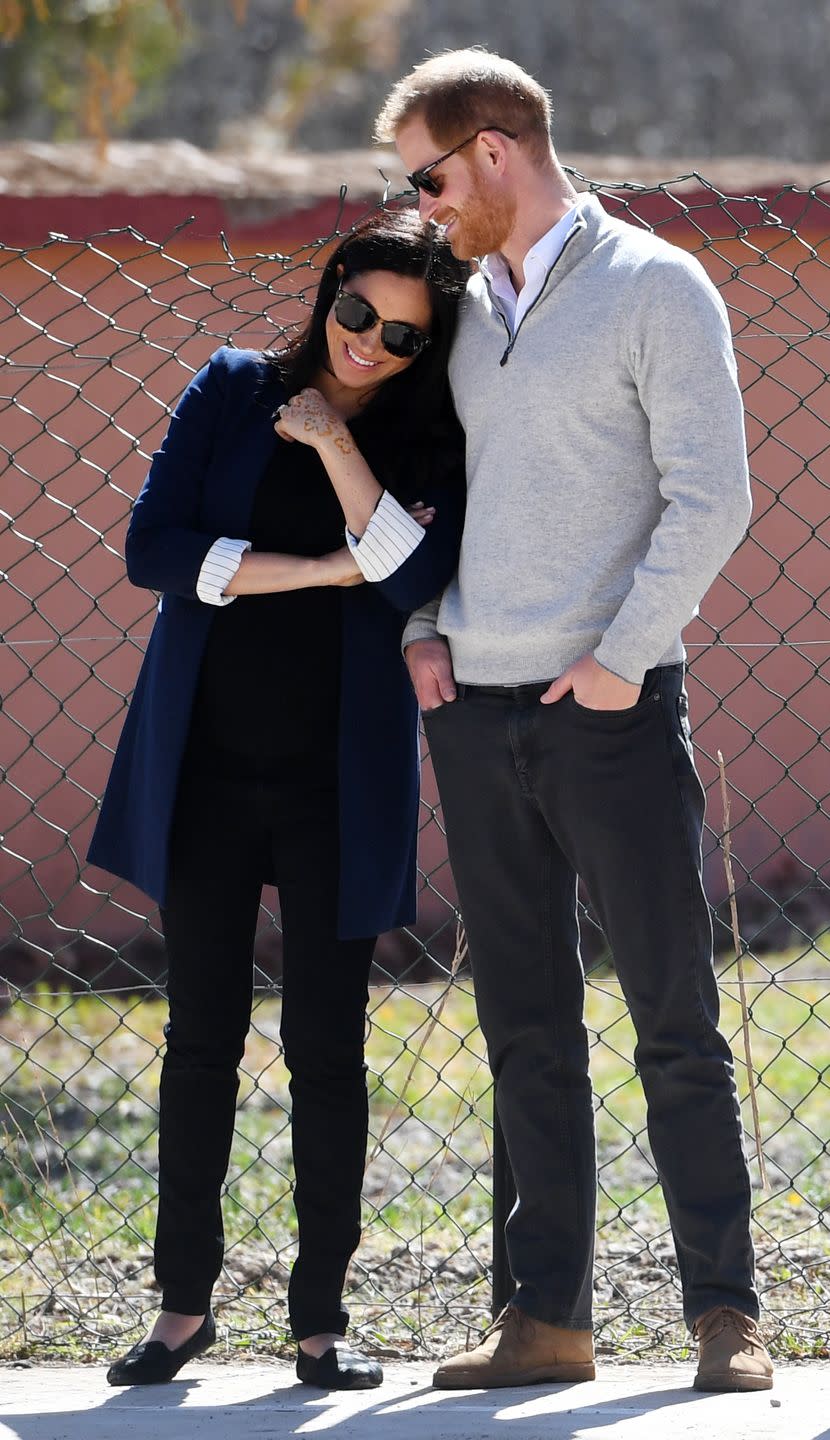
If it weren’t for these bloggers (as well as mainstream media outlets who also cover royal style), royal fans might never find out exactly what clothes a royal is wearing.
“The royals have really elevated to a new place of celebrity because of the lack of access to them,” Venz Box says. “While a lot of these royals have social handles of their own like @KensingtonRoyal, they're really quite gated in what it is that they're sharing, and they're certainly not tagging the brands that they're wearing.”
The royals do not want to appear as if they, or those close to them, are profiting off of the monarchy. These women have relationship with some brands, but they don't want to overtly promote them—and tagging the brands on social media would cross that line. So it’s up to the internet to identify their clothing, to fill the curiosity gap.
Some bloggers have also expanded their revenue streams beyond affiliate links. Effervescence Media, which Ross confirms is a "six-figure business," has created a product line that includes not only replicas of jewelry and clothing worn by royal women, but also their own HRH sweatshirt designs, a candle inspired by the Duchess of Sussex, and a royal-themed digital consignment shop aptly named "Your Royal Closet." The resale site features not only styles Kate, Meghan, and other royal women have worn, but also more affordable lookalike options.
“There's a huge conversation about sustainability right now,” Ross says. “And when it comes to the royal fashion, the pieces that people can afford tend to be fast fashion. So we thought, ‘Okay, how can we make royal fashion accessible and sustainable and available to more people?’ What's great is that you're selling to other people interested in royal clothing. So it's going to a good home.”
Journalist-turned-royal-fashion commentator (and contributing editor to T&C) Elizabeth Holmes notably parlayed her popular So Many Thoughts series on Instagram, in which she provides commentary on Meghan and Kate’s outfits, into a book coming out later this fall.
“It will be a beautiful picture book, one I hope that readers will want to display in their homes,” Holmes previously told T&C about HRH: So Many Thoughts on Royal Style. “But that style will be paired with plenty of substance; I expect it will be something people take the time to sit and read, too.”
Some bloggers write sponsored posts, where they are paid to specifically highlight a brand, and most of them feature traditional banner ads, the kind that can be found on any number of other media websites. Lauren Kiehna, a former academic with a background in British literature who runs the royal jewelry site The Court Jeweller (sometimes under the nom-de-plume Ella Kay), makes a full-time living almost exclusively from those banner ads.
“When you pay for a magazine, next to the content, you see an advertisement, that's the way the content is supported,” Kiehna explains. “Same thing with my website. You scroll down, you read the content. Next to that content is an advertisement. So that's the way I make money."
Much of her site traffic comes from readers who have been following her for years. "I'm very lucky that I have an incredibly dedicated following that comes back to my website. Every single day, sometimes multiple times a day, for content," she says. And she sees her site as tangential to the modern royal blogging landscape in that she isn't focused on pointing readers toward clothing or jewelry that is available to buy.
"I think my blog occupies interesting territory in this space, because it is about present day royals; It is about what they wear, but it is so much about the history of all of it as well," she says.
"I'm not focused on converting sales at all in terms of revenue stream. It frees me up maybe a little bit, in a way."
These bloggers operate in a sparkly, princess-focused corner of the internet, writing about handbags and blazers and detailing the pedigree of tiaras, but it’s still a job on the internet, and that requires dealing with commenters who can be inappropriate or offensive. Said commenters also offer harsh criticism, be it warranted or not.
Kiehna enforces specific commenting guidelines on her site including a strict rule that “we don't talk about women's bodies.”
“I want to make sure that my website is a place that is not about denigration of any of the people that I'm writing about,” she says, noting that she is careful to monitor the posts about the Duchess of Sussex, who is biracial, for any racist comments. Kiehna also notes that people can be cruel about Camilla, Duchess of Cornwall.
Meghan has faced particularly vicious online abuse, to the point that the royal family had to recalibrate their approach to policing comments. Both Kensington Palace and Clarence House implemented social media guidelines back in March of 2019 to deal with the racist attacks on Meghan. “The aim of our social media channels is to create an environment where our community can engage safely in debate and is free to make comments, questions and suggestions,” reads a statement released at the time. “We ask that anyone engaging with our social media channels shows courtesy, kindness and respect for all other members of our social media communities.”
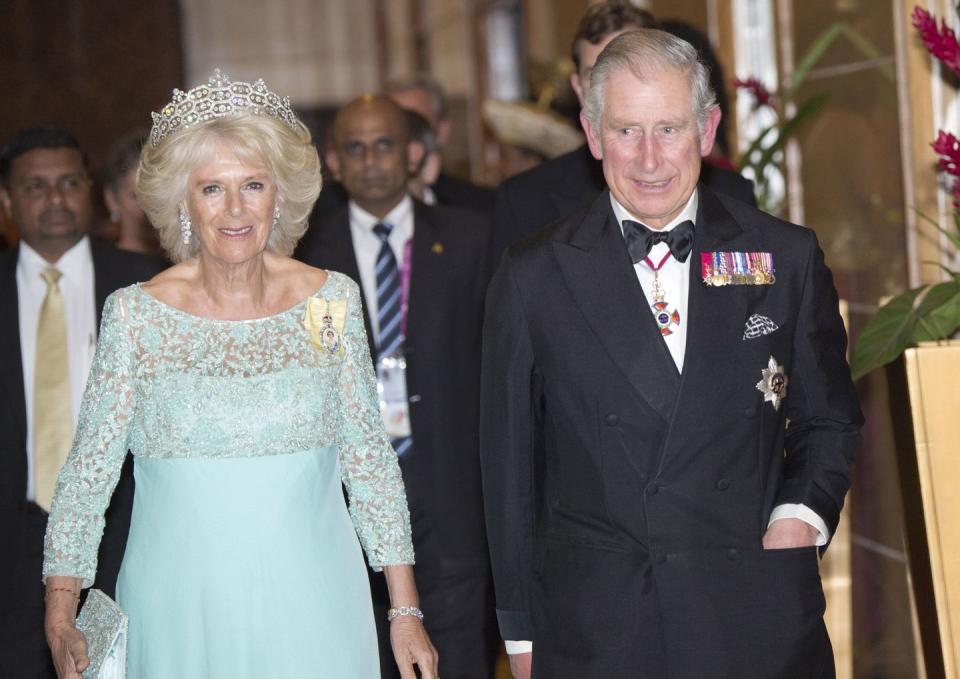
Following the death of George Floyd at the hands of police officers, Elizabeth Holmes’s commenters inspired her to examine how she speaks about Meghan.
“I have been thinking a lot this week about racism, Meghan, and the royals. I want to acknowledge what I have done to contribute to the harmful racist discourse surrounding Meghan, and what I have *not* done to speak out against it,” Holmes wrote on Instagram, apologizing and promising to do better.
Ross and her team also sometimes receive comments suggesting that they are profiting off of or even exploiting the royal women. A statement about Meghan's Mirror released by Effervescence Media explains that "categorically, unequivocally and absolutely" the company makes money off of the website. But when asked about these comments, Ross didn’t exactly respond to the criticism.
"We are doing this because we respect these women so much, and respect the work they do," she said, before pivoting to an explanation of how the website functions as a business. “The blogs are a significant amount of work. Literally, a full-time job for two women and multiple other people. And with any website, with any blog, with photographers, with artists, creators deserve to be compensated for the things that you enjoy. That's why you buy books at full price to support authors. We're all creators, even though blogging looks different.”
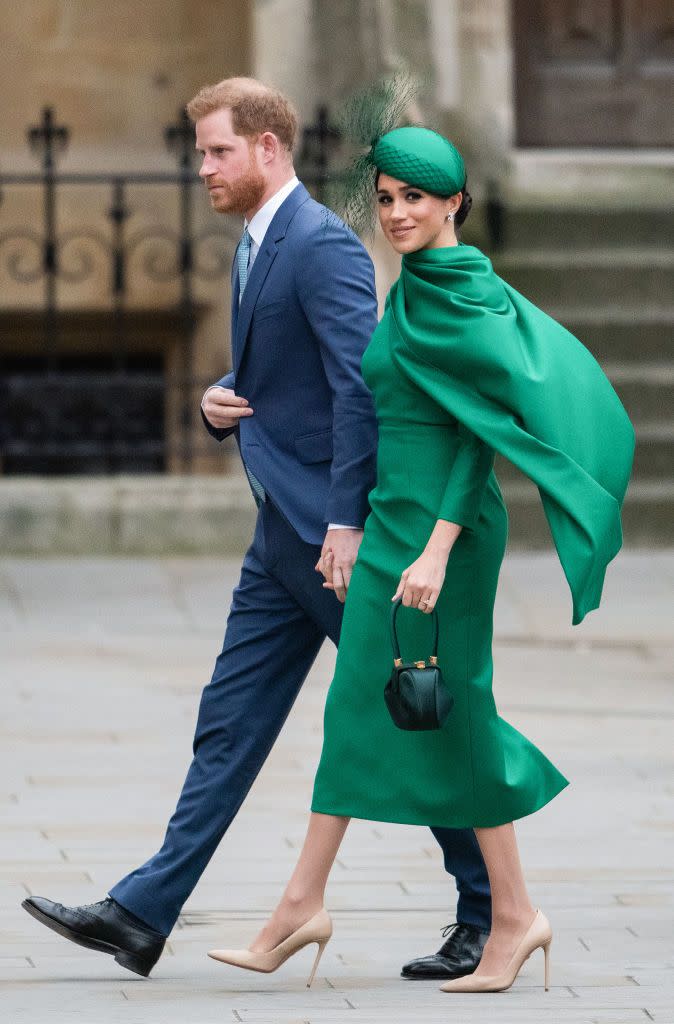
The Effervescence team also has to deal with the unique accusation that they are secretly working with the Duchess of Sussex—a claim which Ross would like to make abundantly clear is not true. The Duchess of Sussex is in no way involved in the running of Meghan’s Mirror, she says, and she and her colleagues aren’t a front for Meghan’s own self promotion.
That said, multiple bloggers interviewed for this story acknowledge that the royals are probably aware of what they are doing. “In a vague sense, we have received feedback from certain sources close to the royals, and we were very reassured that it was positive, because ultimately, we're trying to promote both Duchesses’ messages and their platforms, and to inspire other women in a really positive way,” Ross explains.
According to Kiehna, the royals haven’t reached out to her directly but, she says, she has “a general idea that they are aware, just as I think they're aware of any press about the monarchy, because it serves them to know what people are saying.”
While feedback has been positive, Finding Freedom, a biography of the Sussexes by royal reporters Omid Scobie and Carolyn Durand published earlier this year, describes Prince Harry lamenting the focus on royal fashion coverage. At one point, according the book, Harry told a friend: “I'm tired of people covering engagements and then going off to write some rubbish about what someone is wearing.” The quote seems to suggest that he'd rather that reporters write about the issue or charity at hand, instead of centering the aesthetic of the event.
The royal bloggers, not surprisingly, see it differently. Not only do Meghan and Kate have an enormous impact on a multi-billion dollar industry, offering a potential windfall to a designer by simply wearing a pair of shoes, but to Holmes, fashion is also a “tool” the royals use. Their style is significant, and worth examining, because they intentionally use clothing as a means of sartorial diplomacy and a way to craft a narrative. Meghan and Kate don't just accidentally wear the colors of a nation's flag while on an international royal tour or carry a bag by a local designer.
“Styling, especially as a means of brand building, is an art and a science. It’s not about picking simply what looks pretty or flattering; it’s about telling a story and sending a message,” Holmes told T&C.
“Most of the world will never have a chance to see a member of the royal family in person, but we can all see what they are wearing on their public appearances. They know that is a tool they can use, and they use it well.”
And for Kiehna, the jewels royals wear represent more than a little sparkle. They are a physical reminder of centuries of (often complicated, sometimes unpleasant) history.
“I'm interested in all facets of jewelry historically, and the acquisition of these jewels is part of that history … I have this sense that in Britain especially there's been sort of a growing understanding that colonization and the legacy of empire is something that needs to be reckoned with rather than kind of quietly shoved into a corner,” she says.
“The jewelry is a gateway for me, to talk about history, and talk about female-centric history, that is difficult to do in other ways.”
You Might Also Like

